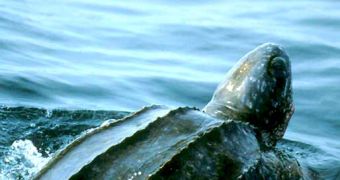Increased international pressure and support for the preservation of leatherback turtles and sharks prompted the International Union for the Conservation of Nature (IUCN) to move for more direct approaches in its efforts to conserve several endangered marine wildlife species. As a result, special underwater "corridors" are to be created, where deep-sea fishing will be banned entirely.
Over 8,000 scientists and officials asked for this during the World Conservation Congress this week. Some 250 nations directly expressed their concerns that industrial fishing may irretrievably affect the leatherback turtles moving from their mating grounds in Costa Rica to the Galapagos Islands, on preset routes. Environmentalists pleaded for the identification of these routes and for measures aimed at banning them to fisheries worldwide.
Hammerhead sharks use the same migratory corridors as the turtles when they move, and they are also threatened by extinction. Ecologists say that the routes the animals use are the same every year and that they could be divided into sectors, which could be closed to trawlers when the endangered species pass through them. "These models will consider areas of highest risk/interaction with fisheries and provide governments and fisheries with the opportunity to protect leatherbacks as they move in real-time," said George Shillinger, a Stanford researcher.
The leatherback turtles are invaluable to the marine ecosystem, as they are considered to be among the last species in a lineage that has outlived even the mighty dinosaurs. They can swim up to 6,000 miles (9600 kilometers) in a single year, which is extremely long for a maritime reptile moving this slowly. They are able to swim at depths half a mile under the surface and adults grow to be the size of small automobiles.
"Leatherback sea turtles survived the asteroid that killed off the dinosaurs, but they are unlikely to survive our unsustainable appetite for swordfish and tuna. If leatherbacks are to survive the coming decades, we must convert talk to action; otherwise we will lose one of the most ancient creatures on the planet, in the next ten to thirty years," concluded IUCN Marine Turtle Specialist Group member Todd Steiner, who is an executive director of the Turtle Island Restoration Network.

 14 DAY TRIAL //
14 DAY TRIAL //